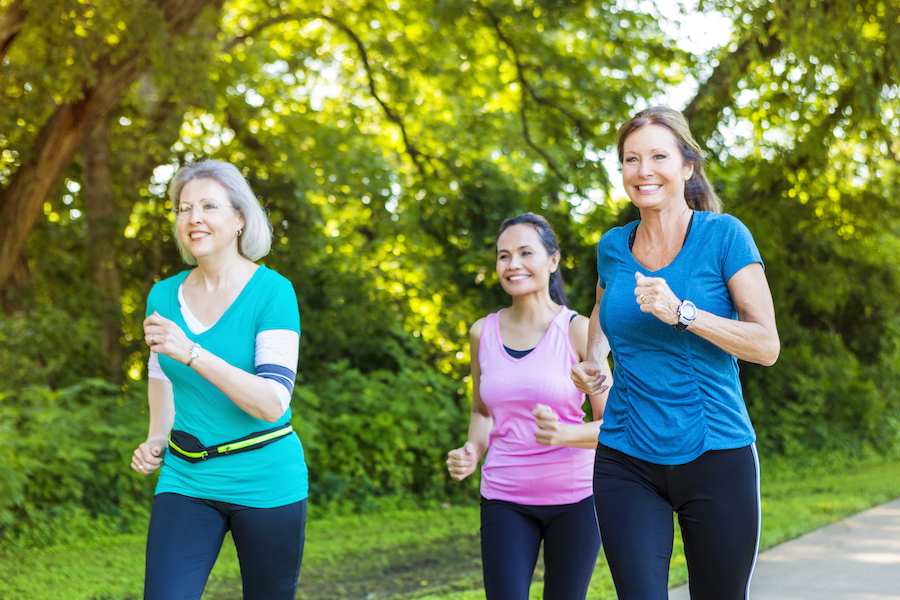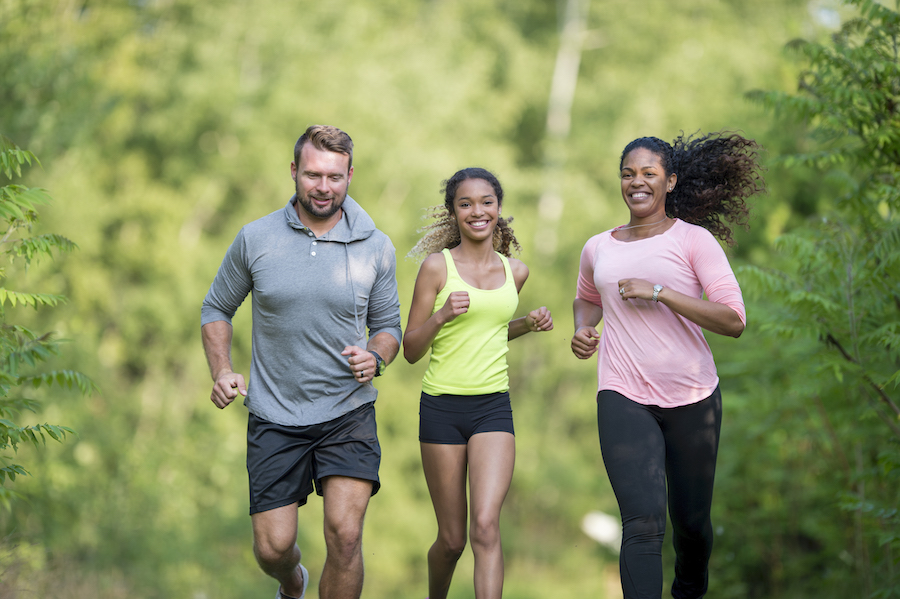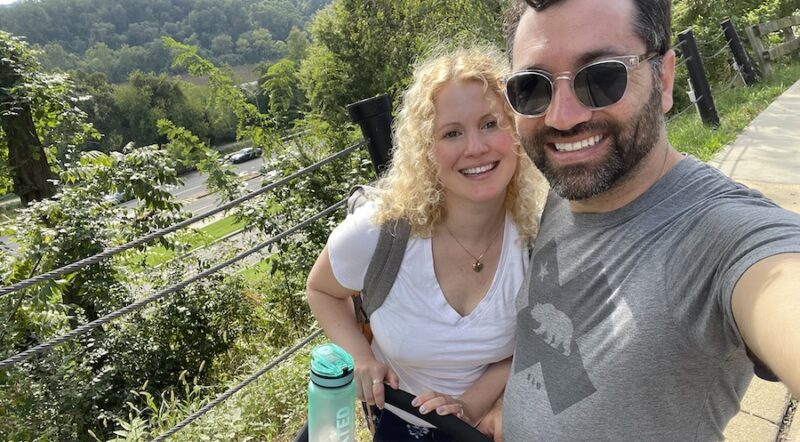Five Great Trail Activities and Their Health Benefits

Pop quiz: How much physical activity should you be doing per week? Now (and be honest!): How much physical activity do you actually do in a week?
According to the CDC, the average adult should aim for at least 150 minutes of moderate-intensity physical activity per week. And for kiddos, that number pops up to 420 minutes per week (or 1 hour per day)!
Meeting these targets can help improve your health and your quality of life; reduce health-care costs and the risk of chronic disease; and simply make you feel better physically, mentally and emotionally.
So, how did you do on the quiz? If you’re meeting (or exceeding) your marks, congratulations! And if your mental math is revealing that there’s room to grow, don’t worry! You’re not alone—and there’s no better time to get started.
A New Challenge for Americans

In January 2020, the CDC launched their Active People, Healthy NationSM initiative, which is helping 27 million Americans become more physically active by 2027. Through the initiative, they have provided a ton of resources to help get everyone off on the right foot and to keep them going strong—including evidence-based strategies for reaching this national goal.
Fittingly, two of these strategies specifically point to creating and/or enhancing activity-friendly routes to everyday destinations and access to places for physical activity. And since we know that trails not only provide convenient, safe routes to where you want and need to go—school, the office, the grocery store, a friend’s home, etc.—but also a wide range of outdoor activities to keep us moving and motivated, why not go (and get active) by trail?
We’ve rounded up a few activities for you to try out on the trail—plus shared some of their health benefits. To find a great trail near you, visit TrailLink.com, which catalogues more than 36,000 miles of multiuse trails across the country. (Just remember to double-check permitted uses and trail rules before you go!)
Walk It Off

Benefits: Nearly anyone in reasonable health can engage in some low- to moderate-impact exercise like walking. Brisk walking burns as many calories as jogging for the same distance and poses less risk for injury to muscle and bone. Also, low impact means it’s easier on joints and tendons.
**CALORIES BURNED (3 MPH): 195 FOR A 130-POUND INDIVIDUAL; 345 FOR A 230-POUND INDIVIDUAL
Run for Your Life

Benefits: Did you know that running helps lower your blood pressure by maintaining the elasticity of your arteries? It also maximizes your lungs’ potential and keeps them strong and powerful, strengthens your heart, and helps prevent heart attacks. Fun fact: The heart of an inactive person beats 36,000 more times each day than that of a runner.
CALORIES BURNED (6 MPH): 591 FOR A 130-POUND INDIVIDUAL; 1,045 FOR A 200-POUND INDIVIDUAL
Healthy Cycle

Benefits: No surprise here that biking is great for strengthening and toning muscles—especially our legs and backside! It can also be an effective way to prevent and manage various conditions such as heart disease, high blood pressure and type 2 diabetes, while increasing our energy levels and helping us manage stress and pain. And did you know? It’s good for the prevention and reduction of arthritis.
CALORIES BURNED (12 TO 14 MPH): 472 FOR A 130-POUND INDIVIDUAL; 836 FOR A 230-POUND INDIVIDUAL
Get Inline, and Let’s Roll

Benefits: When compared with walking and biking, inline skating sometimes flies under the radar, but it does offer some unique health benefits. For example, it is better for developing specific hip and thigh muscles—and it’s more effective than biking, in particular, for targeting the hamstrings. Also, this low-impact activity has been found to cause less than 50% of the impact shock to joints than running. It has also been found to provide a better aerobic workout than biking, because with biking, it’s easier to coast.
CALORIES BURNED (1 HOUR): 738 FOR A 130-POUND PERSON; 1,306 FOR A 230-POUND PERSON
Ploughing Ahead

Benefits: Cross-country skiing requires us to use a large number of muscle groups at one time, depending on the type of technique used (diagonal stride vs. double-pole technique, for example), making it a great strengthening and endurance activity. The use of ski poles to propel oneself down the trail also means that naturally, it’s a much more intense upper-body workout than walking or running. Of course, you’ve got to have snow. But “weather permitting,” it’s a great calorie burner.
CALORIES BURNED (1 HOUR): 413 FOR A 130-POUND PERSON; 731 FOR A 230-POUND PERSON
*Note! When exercising, you should always listen to your body and consult a doctor if you’re experiencing chest pain, fatigue, nausea, unexpected breathlessness or lightheadedness.
**Calories = METS x weight (kg) x time (hours) (Note: 1 MET is equal to 1 calorie/kg/hour; 2.2 lb = 1 kg); MET values obtained from: Ainsworth BE, et al. 2011 compendium of physical activities: A second update of codes and MET values. Medicine & Science in Sports & Exercise. 2011;43:1575.

Donate
Everyone deserves access to safe ways to walk, bike, and be active outdoors.




